Operating and overclocking standard
We had no problem assembling our test
around P8Z77-V LE PLUS. The motherboard works well at its default settings.
that’s great because we don’t realize any improve in the process of booting
mainboard, disappointedly. The same to other ASUS products, it doesn’t display
any instruction hot key on its startup image, except for the renowned Del key.

Start
up the motherboard
If you disable the startup images on the
BIOS of the motherboard, (or if you can guess without any prompts that it can
be turned off by pressing Tab), you will receive lots of info from the
motherboard about its model name, BIOS version, CPU model name, number of
memory and frequencies. However, instead of actual CPU clock rate motherboard
will report its regulated clock rate, notwithstanding the Turbo techs.
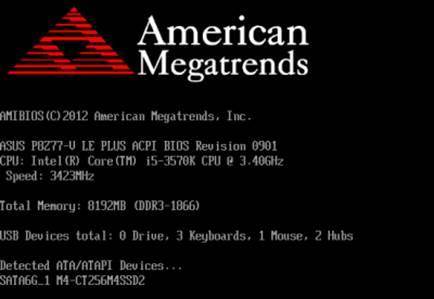
Startup
BIOS
Yes, the motherboard today starts up so
fast that it’s hard not only to read what they first pop up on the screen but
also even have to press the button to enter their BIOS. That’s the reason why ASUS
P8Z77-V comes with the Exclusive Boot Features leaflet in which describes the
features such as Fast Boot, ASUS Boot Setting, Direct BIOS Access and Windows 8
BIOS Boot Settings. as you may know from the ASUS
P8Z77-V LK review, ASUS Boot Setting utility can be used to
automatically load the BIOS interfaces from Windows. To us, we just need to
turn the Boost settings off quickly in the BIOS of the motherboard (that’s in
the startup part) in our testing time.
In our review about Gigabyte GA-Z77-D3H we
called it a faulted motherboard. this can be sued to talk about ASUS P8Z77-V. all
the power-saving techs available on CPU of Intel is activated on it by default
and work accurately. Besides, you can turn on EPU Power Saving Mode by using a
respective BIOS option or switching on the plane. CPU works at its default
settings, actually, following all of its official technical specs, and we can
easily speed it up by allowing ASUS MultiCore Enhancement, in which increases
the multiplier frequency of CPU to the max level as regular by allowing the Intel
Turbo Boost techs for single-threaded load. To obtain higher performance, you
can also use the Tuner OC options, overclock CPU automatically, but we’ve tried
to find the manual optimum settings that easily make the CPU stable at max
clock rate of 4.6 GHz. We can also increase the memory frequency to 1,866 MHz and
adjustable memory timings as necessary.

AIDA64
CPUID
We always want to remind you that we want
to “maintain” the overclocking process, which means that the overclocking
system can be used continuously. We don’t disable any feature or control. We
continue to use power-saving tech of Intel and run it to reduce the multiplier
frequency of CPU and voltage, disable minor details that CPU doesn’t use and
switch the CPUs onto saving mode at low load.
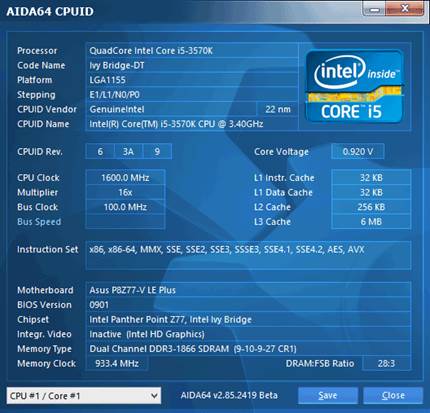
AIDA64
CPUID
Comparing performance
As usual, we will compare the motherboard
speed on 2 different modes: in nominal mode and in the process of overclocking CPU
and memory. The first mode is interesting as it show how the motherboard works
with its default settings. That’s a fact known by most of users who don’t
fine-tune their system, they just choose the optimal BIOS settings and do
nothing else. That’s the reason why we run all the tests that almost don’t
intervene in any way with the default settings of the motherboard. To compare,
we also let in the results of the following motherboard: ASRock Z77 Extreme11, Asus
P8Z77-V, Asus
P8Z77-V LK and Gigabyte
GA-Z77-D3H. the results in the diagram have been arranged in
descending order and the numbers for Asus P8Z77-V LK is marked with a darker
color for your convenience.
Nominal mode
We use Cinebench 11.5. All the tests have
been run 5 times and the average result from the 5 times has been taken for the
efficiency diagram.
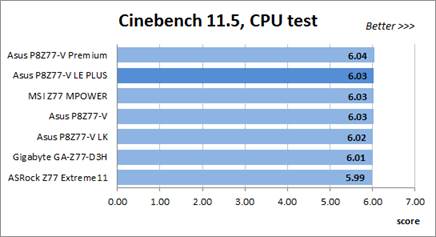
Cinebench
11.5 test
We have used Fritz Chess Benchmark utility
for a long time and it’s performed the illustration. It creates repeated
results, performance in scale that completely depends on the number of the
related calculating subjects.

Fritz Chess Benchmark test
x264 FHD Benchmark v1.0.1 (64bit) test allows
comparing system performance with a database with the existing result. The
average level of the 5 consecutive testing times is presented on the following
diagram:
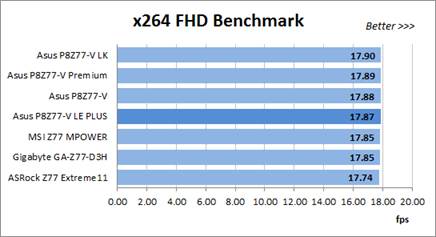
x264
FHD Benchmark test
We have measured the performance on Adobe
Photoshop CS6 using our standards which are made from Retouch Artists Photoshop
Speed Test being creatively changed. It includes editing typical images of 4 24-megapixel
images from a digital camera.
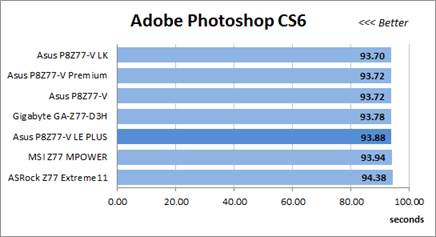
Adobe Photoshop CS6 test
In a test of saving a 1 GB compressed file
using LZMA2 algorithm, while other compressing settings are still at default.
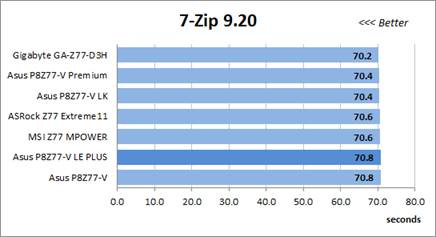
7-Zip 9.20 test
Like in the data-compressing test, the
faster the 16 million Pi figures are calculated, the better it is. This is the
only standard that the number of processing cores is not important, as it
creates single-loaded level.
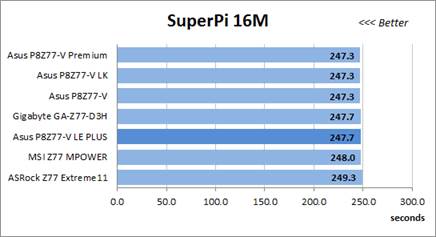
SuperPi
8M test
The next diagram shows the results at 3DMark11
CPU - Physics Score test. This score is obtained in a special physical test
reproducing the behavior of a complex gaming system working with lots of
subjects:

3Dmark
11 test
Scoring the integrated system with Hitman
Absolution game turns our very convenient. It can be set up directly from the
games, from the gaming utilities and even from the command prompt. To have the
acceptable minimal result, we have to use the lowest image settings and use one
of the low res modes.
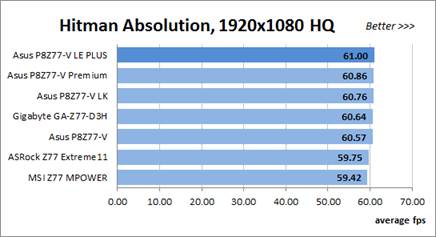
Hitman
Absolution test
Batman: Arkham City game also has strong
reaction to any changes in the CPU clock rate, but it uses DirectX 11. We
perform scoring this gaming system 5 times with high image quality and then
take the average of those 5 to put on the diagrams.

Batman
testing
Like we’ve said many times on our reviews, the
same motherboard is easy to offer the same performance in an identical
condition. You can see evidence in our result in nominal mode.
Overclocking
mode
At overclocking mode we test all the
motherboards at 4.5 GHz GPU frequency and with the identical settings to see in
what settings motherboards’ efficiency can be performed in mode compared to
nominal.
It can be different at overclocking mode as
ASRock Z77 Extreme11, P8Z77-V and Gigabyte GA-Z77-D3H can overclock our CPU to
its max level which is 4.6 GHz while other models stop at 4.5 GHz. The 3
aforementioned models will have the advantages thanks to that difference, but
we have tested all of them at 4.5 GHz level for the purpose of comparison.
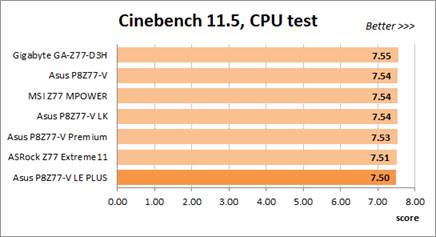
Cinebench
11.5 test
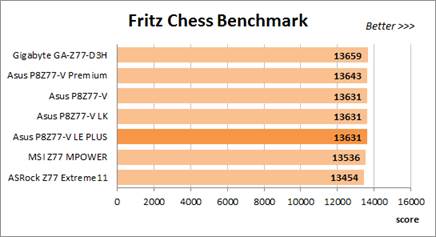
Fritz Chess Benchmark test

x264
FHD Benchmark test
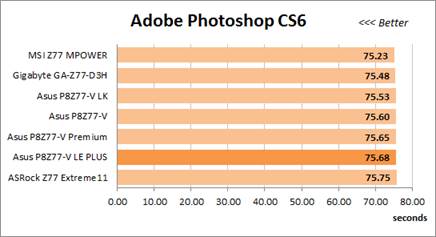
Adobe
Photoshop CS6 test

7-Zip
9.20 test

SuperPi
8M test

3Dmark
11 test
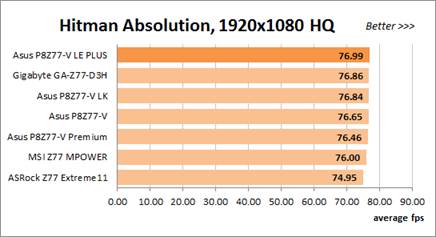
Hitman
Absolution test
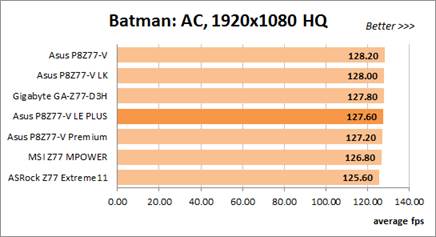
Batman
test
As expected, the overall picture still
remains when the motherboard is overclocked. P8Z77-V LE PLUS may display the
lowest result, like in Cinebench 11.5, or go ahead of other models like in x264
FHD Benchmark, but it’s not much different from other ASUS motherboard, and
even with the motherboard of other brandings.